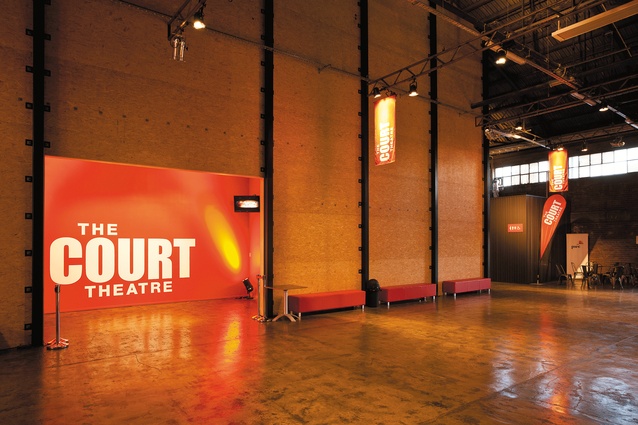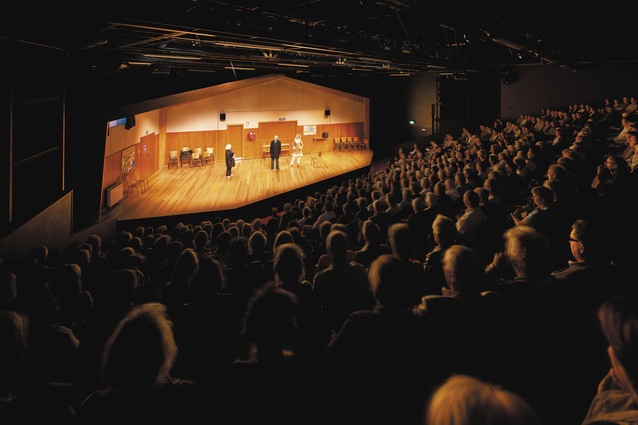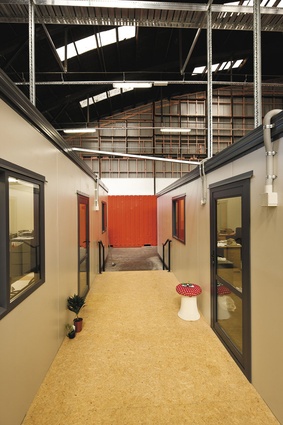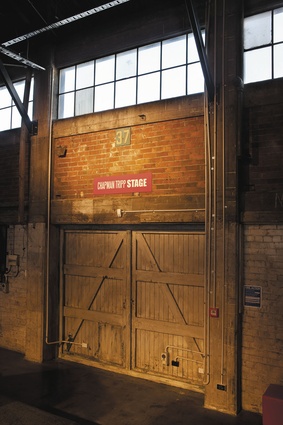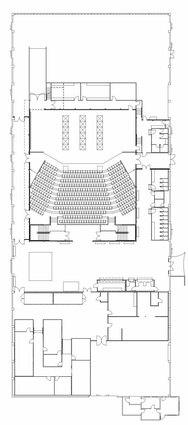The Shed by Fulton Ross Team Architects
The Court Theatre was one of many Christchurch institutions made homeless in the February earthquake.
The Court Theatre had to vacate its Arts Centre home in the city centre after the complex of historic buildings was shattered by the quake. Just nine months later, the Court is back with a new theatre, built in only 16 weeks at a cost of $4.62 million, inside a former industrial building in the suburbs.
A large, warehouse-like former grain store – 80m long and 32m wide – has been pressed into service as its new home. The new theatre is a pragmatic, raw and exciting space best summed up by its unpretentious nickname – The Shed.
The theatre found its new home in Addington – a suburb to the south-west of the city centre that, since the ’quake, has quickly transformed from light industrial use to a new home for displaced offices and performance venues. But the area’s industrial character is still clear when you approach the rugged new theatre. A chip-seal yard acts as the car park and the theatre’s new neighbours comprise similar warehouse buildings still in active industrial use.
The public enters the building through two glass doors into a large foyer. The arrival space is suitably theatrical. It is long, tall and narrow, with bare concrete floors and much of the building’s industrial past left intact. A grain hopper still hangs from the high roof and the walls remain scrawled with chalk lettering from its previous use.
Architect Stewart Ross, director of Fulton Ross Team Architects, says the honesty about the building’s past was partly budgetary and partly respect for the city’s ’quake-battered heritage. “We quite simply couldn’t afford to do a lot in here. The ’quake has meant the sad loss of many wonderful buildings. This is a part of Christchurch’s legacy,” he says. “My approach to heritage is to touch it lightly. Just let it be. It was important to leave all that.”
Into this foyer space, two red shipping containers, used extensively for a variety of purposes in post-quake Christchurch, have been inserted down the left-hand wall to act as a box office and a bar. The far end of the foyer will be used as a small performance space. A wide corridor extends to the right of the entrance doors, containing Portacabin toilets clad in steel. This L-shaped front-of-house space is wrapped around the largest architectural addition to the former grain store – an auditorium. In line with the project’s honesty, the box is clearly an addition to this 1950s’ industrial space. The box is constructed of a particle board and styrofoam sandwich product with slim, steel columns. The unclad particle-board exterior provides a raw and honest right-hand wall for the foyer space.
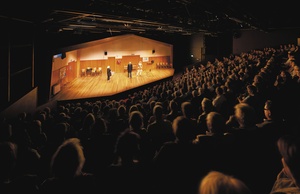
The 400-seat auditorium is housed inside this large, roughly square box which runs the full height of the granary. The box dictates the layout of the whole project, explains Ross. “Our philosophy was ‘Let’s just build a big box in the middle and make that our theatre, then use all the space around that for all the other purposes’,” he says.
The layout of the seating and stage has been informed by years of thought by theatre bosses and Ross. Expansion plans had been developed for the Arts Centre but never realised. This ‘short cut’ meant there was a clear idea about how a new auditorium should be laid out and also that the project could be delivered quickly.
The new auditorium is a fresh iteration of the main auditorium at the Arts Centre. The seating is arranged in a similar pattern, with a stage that juts out slightly into three blocks of fanned seats, but subtle changes should greatly enhance the theatrical experience. Outside the box, dressing rooms and a green room line the back wall, with a climate-control plant for the auditorium behind.
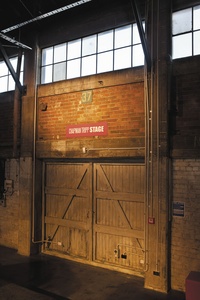
At the back end of the building, the warehouse returns to its raw form, providing a generous workshop space for set designing and constructing. A ramp leads up onto the stage from the workshop through a set of 5m-high double doors. At the other end of the grain store, concealed from the foyer by a smoke-stop wall clad in steel, are the Portacabin offices, a wardrobe, laundry, second green room and rehearsal space.
The large, raw volume has been made to work hard for the theatre – masquerading as foyer, auditorium, offices and workshop with varying degrees of intervention. It is rough and ready but, in a city recovering from an earthquake, ready is all you need. That the building has been delivered so quickly and cheaply, but with such theatrical flourish, is nothing short of miraculous. Theatre director Philip Aldridge was clear about what he wanted from the outset. “We said, ‘Build it as exquisitely and as cheaply as possible.’” In a rare feat, he may have achieved both.

